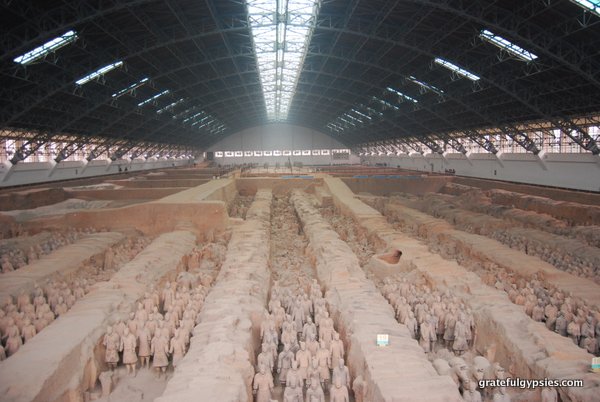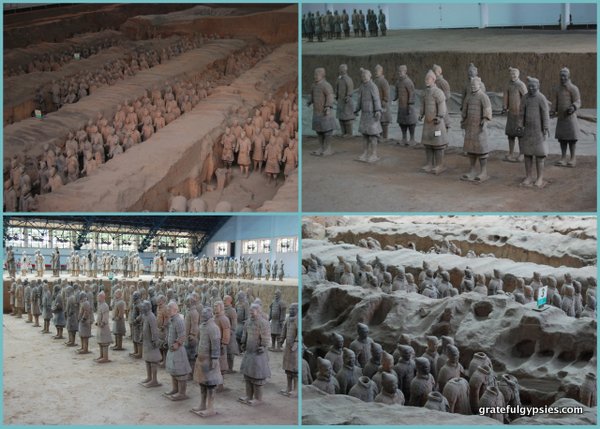Terracotta Warriors Posted by sasha on May 22, 2017 in Culture
There are many famous landmarks across China. One of the most impressive is without a doubt the Terracotta Warriors (兵马俑 – bīng mǎ yǒng) in Xi’an. This UNESCO World Heritage site is said to be the greatest archaeological discovery of the 20th century. Let’s take a closer look at this fascinating piece of Chinese history and culture.
History
Qin Shi Huang (秦始皇 – qín shǐ huáng) was the founder of the Qin Dynasty and the first emperor of a unified China. He survived three assassination attempts and towards the end of his life began to fear death. In search of immortality, he became obsessed with finding an “elixir of life.” He also had a massive mausoleum constructed, modeled on the Qin capital of Xianyang (咸阳 – xián yáng). Surrounding the tomb were thousands of life-like statues of warriors, hose-drawn chariots, and weapons. These were meant to protect him in the afterlife, and ensure he always had subjects to rule over.
It’s said that upwards of 700,000 people toiled away at its construction. The writings of court historian Sima Qian say the mausoleum was also filled with models of palaces, rare artifacts, wonderful treasures, and replicas of rivers made from mercury. Emperor Qin passed away in 210 BCE and was buried in the grand tomb.
Fast forward to 1974, when workers in the area were digging a well. They discovered fragments of terracotta as well as bronze arrowheads. This interested archaeologists, who would conduct further digs that revealed a life-sized terracotta soldier. A museum was authorized a year later, and on National Day in 1979, the first pit was opened to the public. Thousands of statues have been uncovered, and excavations continue to this day. It was given UNESCO status in 1987 and has remained one of the most popular tourist attractions in all of China ever since.
The Warriors
While the sheer numbers of figurines is amazing, what’s really impressive is the fact that each one is unique. They’re praised as “masterpieces of realism” in the UNESCO listing. In addition to unique facial features, there’s also variation in uniforms and armor among the warriors. While they all appear gray now, the figures were once painted with bright colors. Here are a few of the most common types of warriors you’ll see at the site:
-
Kneeling Archer (跪射俑 – guì shè yǒng)
-
Middle Ranking Officer (中级军吏俑 – zhōng jí jūn lì yǒng)
-
High Ranking Officer (高级军吏俑 – gāo jí jūn lì yǒng)
-
Cavalry Man and Horse (鞍马骑兵俑 – ān mǎ qí bīng yǒng)
-
Standing Archer (立射俑 – lì shè yǒng)
Standing in front of the main pit, it’s hard to imagine that these thousands of figures were all hidden from the world just a few decades ago. It’s an incredible sight to behold, and it definitely deserves its spot as one of the most popular attractions in China.
Take a closer look at the museum and the amazing Terracotta Warriors in this short video tour:
Have you visited the Terracotta Warriors? What did you think? Let us know in the comments below!

Build vocabulary, practice pronunciation, and more with Transparent Language Online. Available anytime, anywhere, on any device.






Leave a comment: